
We kindly inform you that, as long as the subject affiliation of our 300.000+ articles is in progress, you might get unsufficient or no results on your third level or second level search. In this case, please broaden your search criteria.

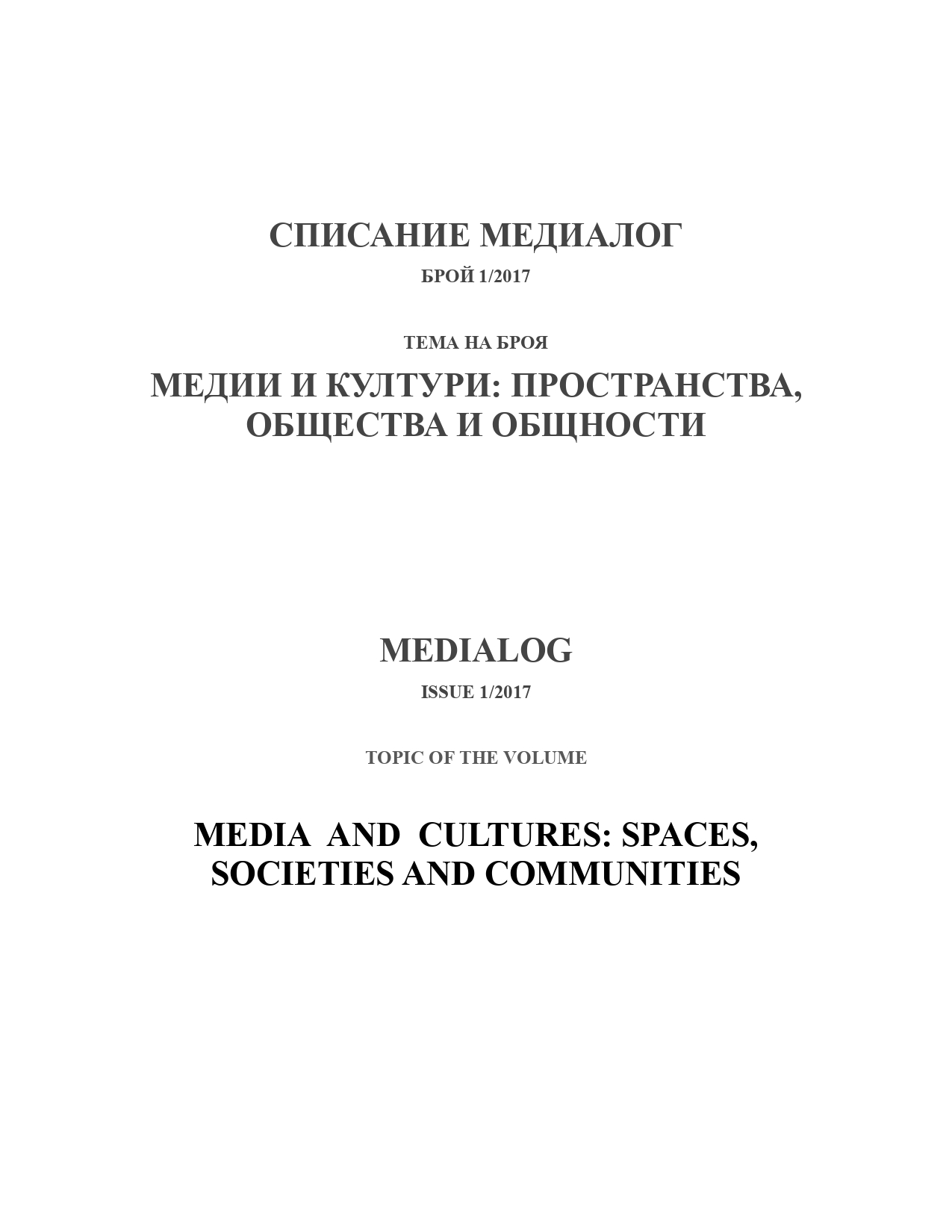
According to research, documentaries are among young people’s favorite sources of information on the time of communism in Bulgaria. Are these films announced, how are they announced, do announcement have their own message? The article looks into film announcements as a paratext with specific features on the internet. The study covers the period 2006-2015 and regards as “films on communism” the documentaries, developing plots from the period 1944-1989 in which concepts on “communism in Bulgaria” are concentrated. Announcements are viewed in connection with online platforms promoting them, on the one hand, and with cinematographic works, on the other.
More...
Internet has inevitably the media landscape and the way we communicate with each other. The trend has an immense impact on childhood, too. Today, children are “digital natives”. They are always on, always connected, living in a world of communication fragments. Attention spans are shrinking, so do media formats. The aim of this article is to identify and analyze trends in content production and consumption in the digital era. A small-sized yet focused empirical study on the Bulgarian television programmes for children is also presented.Internet has inevitably the media landscape and the way we communicate with each other. The trend has an immense impact on childhood, too. Today, children are “digital natives”. They are always on, always connected, living in a world of communication fragments. Attention spans are shrinking, so do media formats. The aim of this article is to identify and analyze trends in content production and consumption in the digital era. A small-sized yet focused empirical study on the Bulgarian television programmes for children is also presented. The publication is part of the research results of the project N145/2016, supported by Science Sector Fund of Sofia University “St. Kliment Ohridski” on topic “The Film Proposals of the Televisions in Bulgaria in the Period 2010-2015”, headed by Assist. Prof. Zhana Popova. Participants: Bistra Velichkova and Deiana Dragoeva, the Department of “Radio and TV”.
More...
The main aims of the text is to present what are the prevailing trends and processes that take place in YouTube video blogs from 01.10. to 31.12.2015. For this purpose, a total of 50 video blogs have been compared, divided into five thematic categories, by examining the activity of the authors in the period, the approaches used to attract and retain the customer attention, the content theme and the degree of inclusion of products and services in mentioned period. The text is a part of the bachelor’s degree thesis, which was presented in the Department 'Radio and Television' of Faculty of Journalism and Mass Communication in 2016.
More...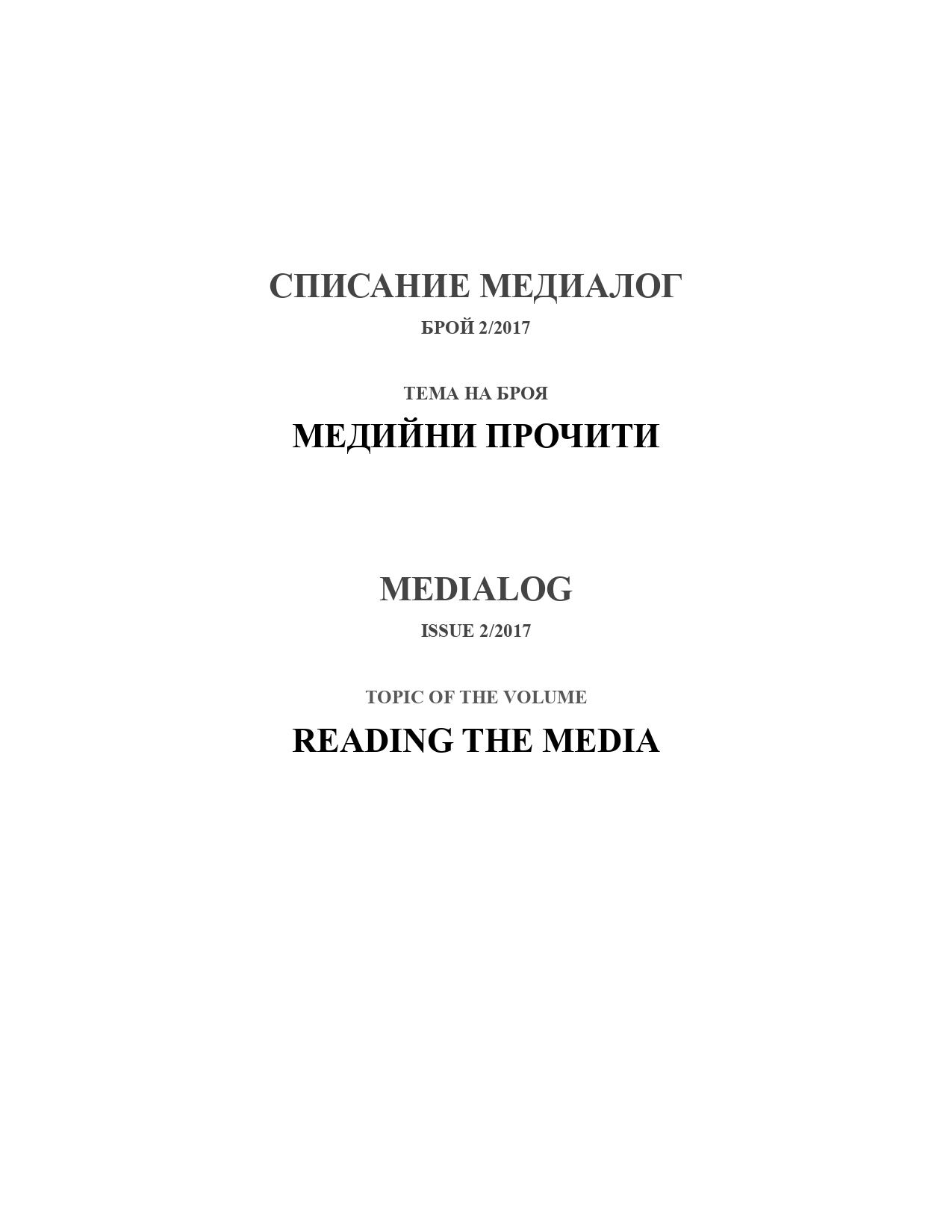
The aim of this paper is discussing the points of interaction between Bulgarian media and non-formal culture in the 1980s. Given the complexity of the phenomenon, the tension is explained rather briefly, with some bright examples on non-formal culture incentives during that period. First, time frames are set and working definitions on the key terms are provided, i.e. non-formal culture and media. Following are the concrete examples on how media and non-formal culture interact over the period. More specifically, the selected examples are: the case of „Committee to Save Ruse“, a „public secret“ and an example for a semi-dialogue between media and non-formal culture; the installation of Nedko Solakov called „Looking at the West“ that exemplifies outstanding censorship or „dialogue made impossible“ and the „We from Kravai“ movie as an example for „dialogue made possible“. The text is a small part of my doctoral dissertation with a title: „Non-formal culture and the Bulgarian radio during the 1980s“.
More...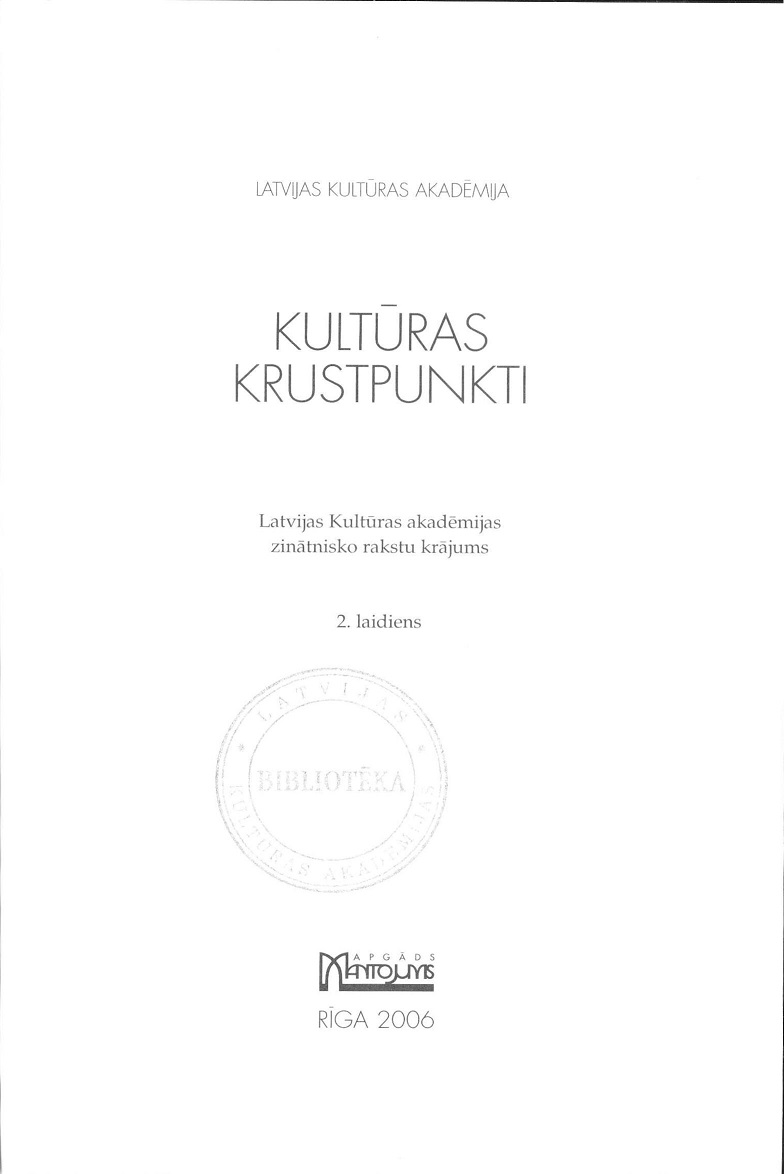
In the 60s of the 20th century, the State Security Committee of the Soviet Union (KGB) established independent social organizations in several Soviet republics called Committees for Cultural Relations with Compatrid Abroad. Their official purpose was the development of cultural contacts an promoting peace, but the secret purpose was investigation of the emigrant communities and using them in order to destabilize the democratic Western states. In the Latvian Soviet Socialist Republic, the Committee for Cultural Relatiojon with Compatriots Abroad was formally established in 1964 by the represent fives of various social organizations and cultural institutions. In reality, tie organization had been functioning since 1955 according to the objectives set the KGB and under its close supervision. The Literature, Art, Music, Theatre, and Youth Sections of the Committee were joined by the leading representatives» Latvian culture - artists, writers, musicians, theatre and film experts, who membership was approved by the party committees of the corresponding professional associations, the KGB institutions, and the Foreign Relation Department of the Central Committee of the Latvian Communist Party.
More...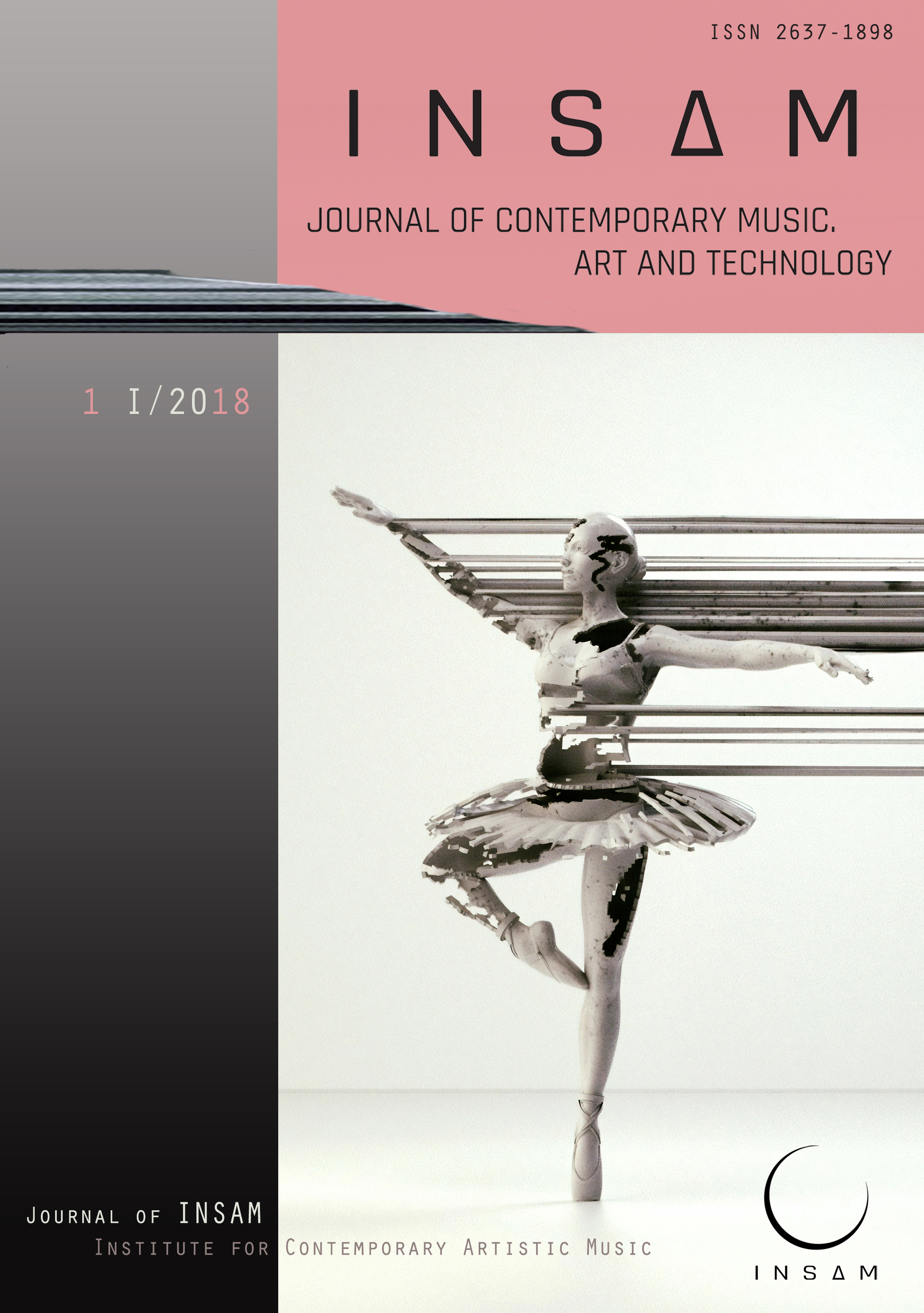
Transhumanist artists have recently been increasing in popularity and numbers. Whether it’s metal-welding sculptors, futurist-oriented video game developers or techno-musicians celebrating life extension, there is more of it being created every day, some of it in new forms of media.
More...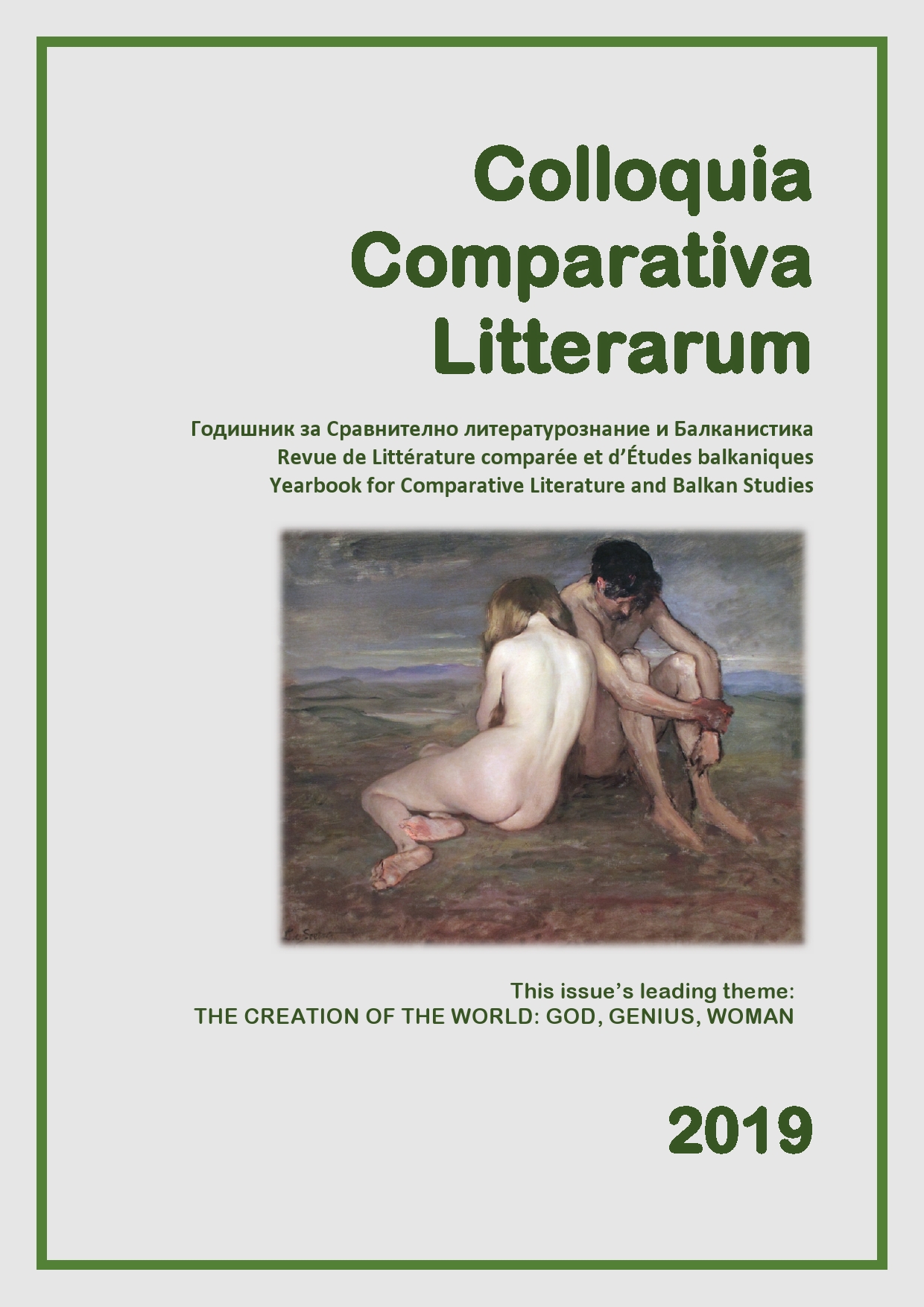
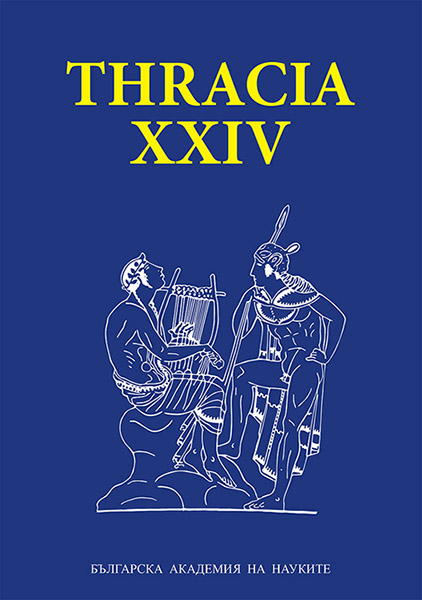
The subject of this study, similar to other objects included in the sacred infrastructure of the Bessi, has the characteristics of a rock-cut megalithic facility. It is located at the foot of the Rhodope Mountain, on the eastern side of the Assenitsa River, about 2.5 km north of Assen’s fortress and about 2 km north of another similar object of the sacred infrastructure of the Bessi in this region: Anathema. It has neither been studied nor published. It is a rock facility comprising several distinct enclosed spaces and connections between them, carved in one of the rocks over Asenovgrad, under one of the many chapels in the town: the St. Petka chapel.
More...
A boundary can have different tangible and intangible forms, and it has a complex, usually subjective meaning since it depends on the perspective of the perceiving person. The boundary defines and changes the essence of what it surrounds. Architecture, as one of the earliest human activities aimed at enclosing spaces, is fairly able to express the complexity of this abstract term. Using both physical and metaphoric means, architecture sets boundaries defining oppositions like in/out, known/unknown, sacred/ profane, terrestrial/celestial. This distinguishing quality is most clearly pronounced in cult architecture, where part of the process of creating sacred atmosphere consists in juxtaposing and distinguishing the enclosed space to that of the profane (the environment). This paper considers some of the earliest examples of cult architecture, where the first boundaries were set, defining concrete space as sacred. Gradually, the structure of these buildings became more complex and developed into a whole system of material and virtual boundaries defining also the rules (rituals) of crossing them. For the aim of this paper I present and analyse Thracian cult buildings found on the territory of Bulgaria as representatives of the ancient cult architecture. It is my purpose to trace and identify different boundaries inherent in their structures and suggest interpretations of their symbolism.
More...
The paper presents the new evidence on Egyptian deities in Serdica during the Roman period. A fragment of pediment known since the mid-20th century contains a partially preserved inscription pointing to the possible existence of a temple of Serapis in Roman Serdica. The inscription is dated to 161–163 AD and informs that the fragment comes from a temple dedicated to Zeus-Capitolinus-Helios-Serapis, built by the town magistrates. Some new archaeological, epigraphic and numismatic evidence from Serdica attests that in the 2nd century AD, under the Antonines, the cult of Serapis was already well known. Moreover, a newly-found coin of Gallienus, minted in Serdica and bearing a depiction of a temple with a statue of Serapis between its columns, proves the real existence of a temple of this deity. The Goddess Isis has so far been attested in the ancient town only on some coins minted in Serdica from the time of Marcus Aurelius. Our study presents some new evidence about her cult as well. A torso of the Goddess was found during excavations in the centre of Sofia. In addition, the images on a well-known monument coming from Serdica and dated to the first decade of the 4th century AD must be revised. Because of its clearly Eastern elements, the images on it could be related to Isis and not to Cybele, as was supposed. All of the mentioned evidence testifies to the importance of the cults of the Egyptian deities Serapis and Isis in Serdica during the Roman Period.
More...
The aim of the study is to comment several types of sacred sites and artifacts originating from Ancient Thrace that have survived until the beginning of the 21st century being adopted in various forms by Christianity. They represent an interesting but little known part of the cultural heritage of today’s Bulgarian lands.
More...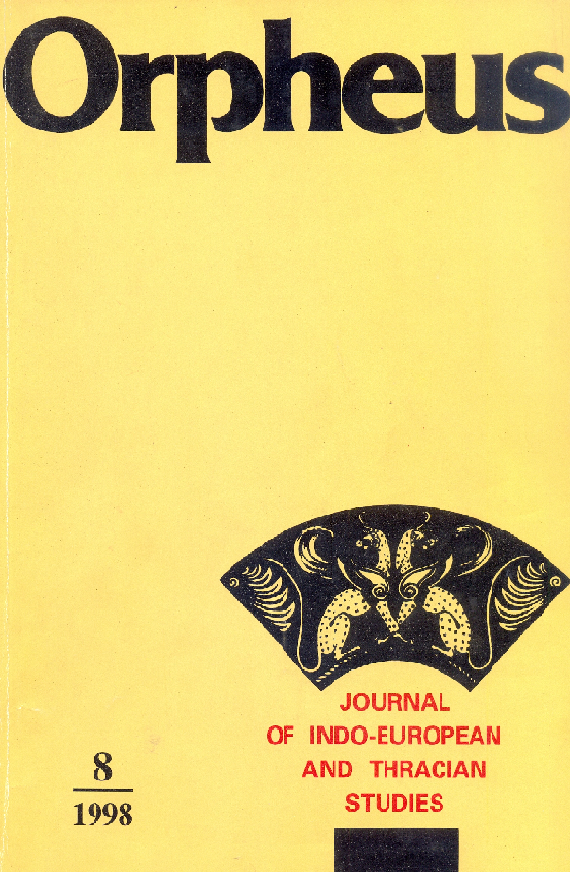
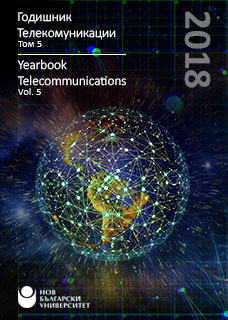
The purpose of the study is to analyze the specificities of the SCADA infrastructure management system and the telecommunication Network Management System (NMS) in the context of their joint work in railway infrastructure.As a result, the development guidelines are manifested in different technological solutions in the direction of integration in the joint work.The work contributes with the following:- Based on the structure and functionality of the SCADA and NMS systems, an analysis of the processes of their possible integration has been made, examining the need for this and the implementation modalities.- A summary of the integration processes, including basic standards and technologies for integration, is given and is an example of the integration of application systems into the railway infrastructure.
More...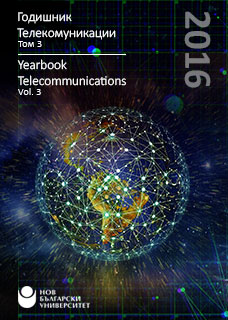
Purpose: We analyze the development of the television field after the liberalization and licensing procedures in Bulgaria. Results: We outline the programming priorities and the features of the main TV channels. Contributions: We summarize what the Bulgarian TV audience has won after the liberalization of the TV area in the country.
More...
Purpose: One of the problems, which lies ahead of Bulgaria is how the audience from different social groups can learn more about students and scientists. Results: Despite the large number of TV channels and stations, there are still free program niches. Contributions: Such empty niche is the idea of youth TV channel, created by students, graduates and professors. With the programs of this channel, the academic community could take active participation in the public debate about the development of the country and the society.
More...
This paper shows a new concept for optimization of Radio frequency spectrum (RFS) orbital resource in international domain. The RFS resource is necessary for proper operation of different telecommunications systems. This resource has three physical dimensions: frequency bandwidth, space coverage area and time. RFS has also quality characteristics: quality (purity) of the spectrum, RFS load, RFS use (consumption), public and professional interest in the use of RFS. A novel model for dimensioning of RFS is described and a short explanation is shown.
More...
Purpose: The development of public TV stations most clearly reveals that in Europe the state tends to withdraw from a lot of its duties and concede them to society. How does that actually happen in post communist countries? Results: The main problems are the lack of political culture, political will for liberalization of the electronic media and desire for honest public debate. Contributions: We can say that for the political fairness of public electronic media, we need honesty and responsibility from each and every journalist. The key problem is whether the political and social situation allows such discourse in electronic media, which is crucial for democracy itself.
More...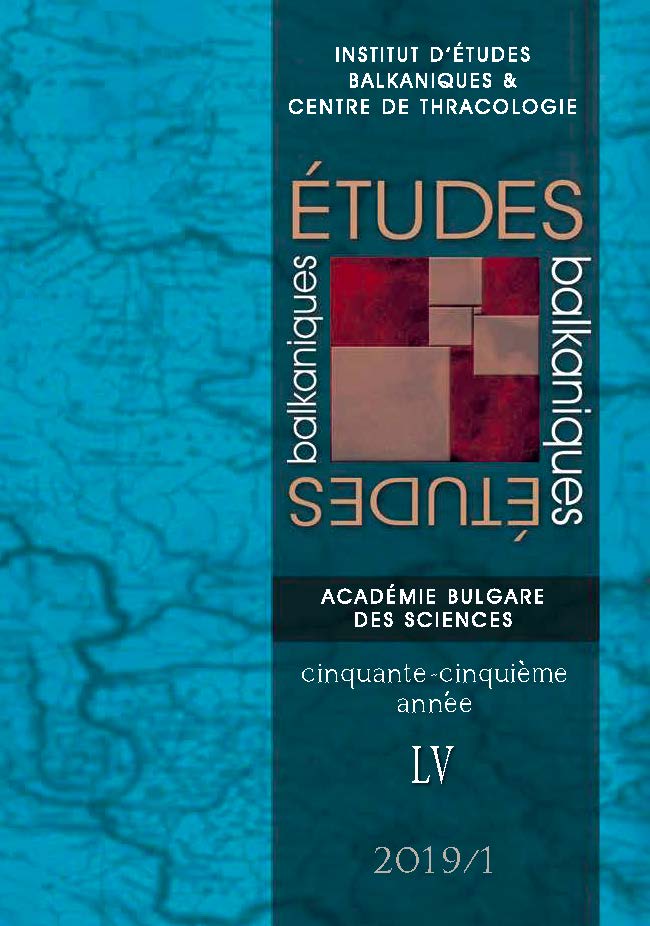
If we think of depictions of monstrosity in ancient literature, the comedy would not be the first genre to come to our mind. This does not mean that the comedy does not depict mythological monstrous creatures, usually hybrid monsters. However, unlike the other genres and dramatic uses of such mythological figures the comedy does not aim to provoke fear by describing them – it usually presents monstrosity in a grotesque way. The mythological monsters in Aristophanes are not frightful, their monstrous nature is tamed and ‘normalized’ to the level of everyday experience. The current analysis focuses on the monstrous (in terms of usual mythological strategies of depiction) characteristics of king Tereus and his companions in the comedy Birds. It analyses the dwelling of Tereus, his depiction and the subtle references to ancient Thracian religious concepts related to his biographical survival after metamorphosis.
More...
The paper looks at different ways of performing live miracles and magic on the stage from ancient times to the present days with the development of new technologies when all magical beings could be presented on stage. The main point is that there is nothing surprising in miracles, and there is nothing magical in magic (Littlewood’s law). In the magic bowl, only innate and acquired skills, knowledge, dexterity, abilities, talents have to blend in with a lot of hard work, perseverance, effort, sustainability, faith and a bit of luck to get in the right place and at the right time. Magic art creates a new virtual reality in which the impossible becomes possible before the eyes of the spectator. Dreams materialise. In the new digital era this is no longer a big problem. However, when it comes to live performance arts, the problem of creating illusions or virtual realities is essential. The study analyses issues related to life and non-life, here and beyond, to the vertical link and the metaphysics of human presence in art in the process of interpersonal communication.
More...